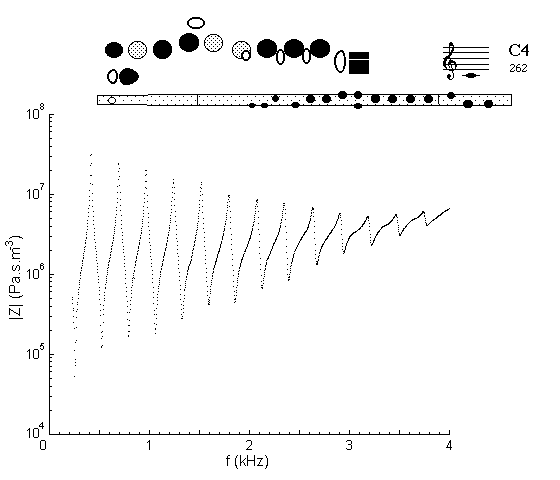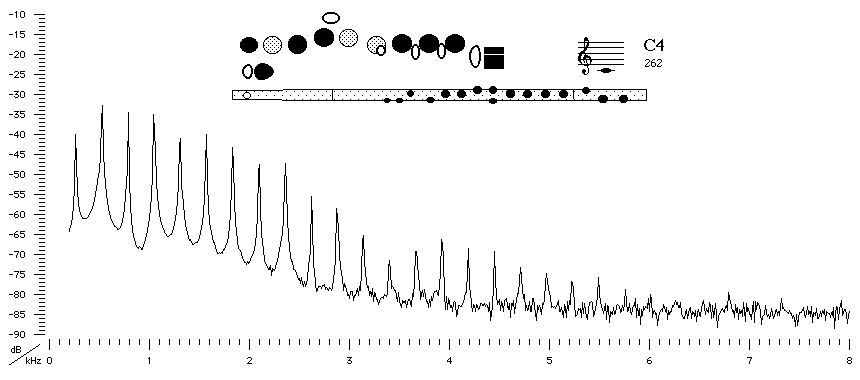| Acoustics of baroque, classical and modern flutes |
modern flute
|
C4 |

|
Fingering Acoustic schematic Non-specialist introduction
to acoustic impedance |
This is the lowest note on this flute. All tone holes are closed, so the flute
most closely resembles a cylinder, and there is no tone-hole filtering at high
frequencies. As a result, the regular series of minima (and maxima) in Z(f)
extends to high frequencies. The gradual rise at high frequencies is due to
the overall geometry: the chimney is in series with the parallel combination
of the main part of the bore and the short section between the closed end and
the embouchure. The first eight or nine minima can be played (C4, C5, G5, C6,
E6, G6, A 6, C7), but usually flute
players only play the first, for which the higher minima aid the production
of harmonics. Details on the all-closed fingering at lowest
note.
6, C7), but usually flute
players only play the first, for which the higher minima aid the production
of harmonics. Details on the all-closed fingering at lowest
note.

Sound spectrum
of a modern flute with a C foot played using fingering for C4.
![]()
![]()
![]()
![]()
![]() You can hear C4
played by Geoffrey Collins.
You can hear C4
played by Geoffrey Collins.
| Acoustic measurements are available for these flutes - modern B, modern C, classical C, classical D, classical flared, baroque Sound clips are available for modern B, classical flared and baroque |
To compare flutes, it is easiest to open a separate browser window for each instrument. |